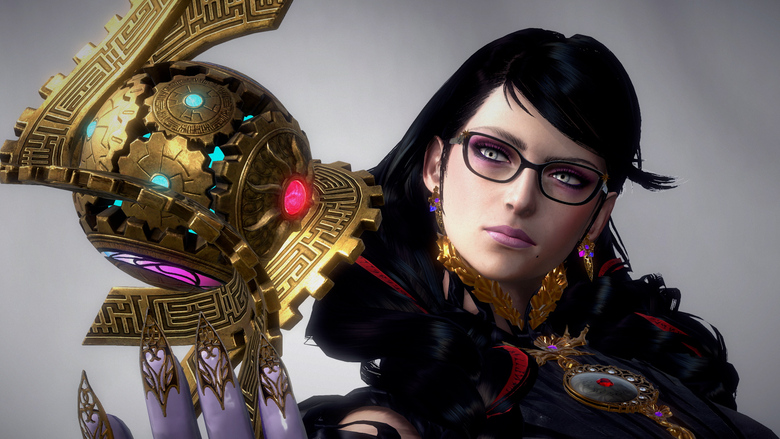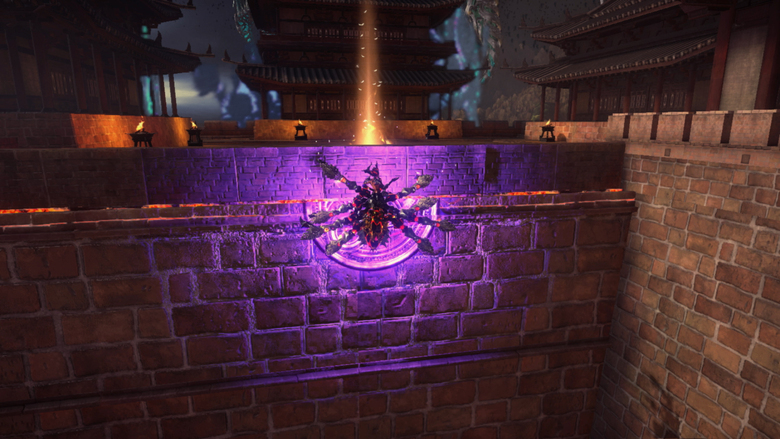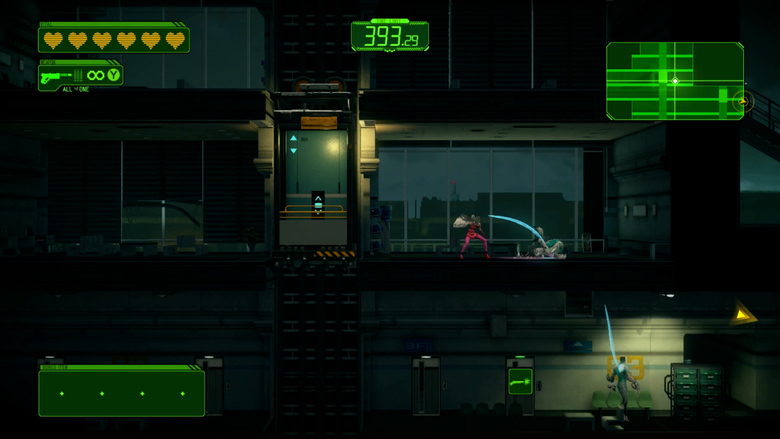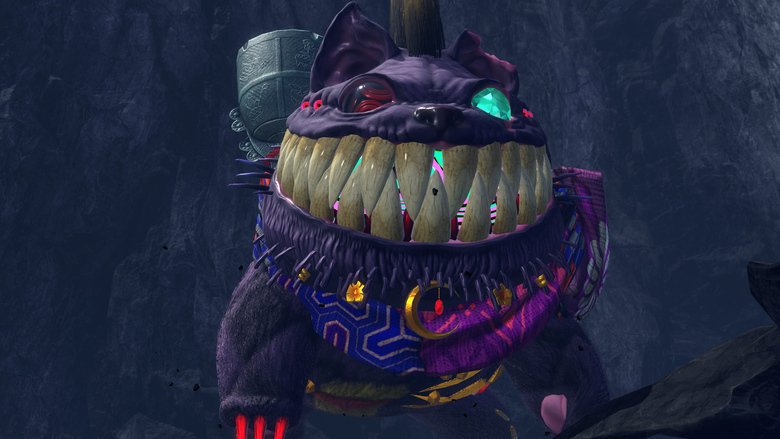REVIEW: Bayonetta 3 Flies Us to the Moon One Last Time

The Bayonetta franchise has always been lauded for its addictive hack-and-slash gameplay, out-of-this-world storytelling, and inspired art direction. Bayonetta 3 dials all of these elements up to eleven, solidifying itself as the apex of the series – for better and worse. The new battle mechanics are absolutely thrilling to execute, breathing new life into familiar gameplay; the environments are as varied as they are beautiful, with spectacular visuals and inventive level design; the soundtrack is also a standout element, featuring some of the best music in the franchise. Pair all of that with some of the most jaw-dropping cutscenes and mind-blowing action set pieces you’ll ever witness in a video game, and it’s safe to say that Bayonetta 3 was a game worth waiting for.
Are you ready to dance?
However, Bayonetta 3 is not without its flaws, with the convoluted story and controversial ending being the biggest offenders for many fans. As established in Bayonetta 1 & 2, the in-game universe is comprised of the Trinity of Realities – Paradiso, the home of the Angels; Inferno, the realm of the Demons; and the human world, also known as The World of Chaos. The tension and conflict between these realms was the beating heart of the first two games, and now Bayonetta 3 adds an extra wrinkle: within the Trinity of Realities, the World of Chaos is made up of countless universes and different realities – also known as the Multiverse – which is the core of the main story in Bayonetta 3.
Rodin is back to tell you what’s what.
MILD STORY SPOILERS
You see, the big bad guy of Bayonetta 3, referred to as Singularity, has declared his version of reality as the Alphaverse, and wants to collapse the multiverse down to a single universe that he can control. To achieve this, he uses manmade bioweapons called Homunculi (this game’s version of Angels / Demons) that have already destroyed countless worlds in the name of Singularity. Different variants of Bayonetta across the Multiverse have tried to resist Singularity’s domination – including the Bayonetta you play as at the beginning of the game – but it ultimately comes down to Bayo 3’s main version of Bayonetta to put an end to Singularity’s conquest. To do so, she must traverse the Multiverse to gather five Chaos Gears (devices that will take her to the Alphaverse to confront Singularity). And of course, she does so with the help of her fellow Umbra Witch, Jeanne, and newcomer Viola – an Umbra Witch in training from one of the different universes.
END OF SPOILERS
Chaos Control! (wait, that’s a different game…)
It’s all very farfetched and difficult to follow at times, even by Bayonetta standards, but I ultimately enjoyed Bayonetta 3’s wild story. I cannot remember the last time I had to repeatedly pick my jaw up off the floor when playing through a video game. I gasped and laughed and cheered and cried. Is the story as good as Bayonetta 1 & 2’s combined narrative? Absolutely not. But given how self-contained the first two games were, I don’t think there was any room to build upon that story without diminishing what was there – and it’s not like Bayonetta 3 undoes what the first two games established. This game takes place in an entirely different universe, a different timeline – and, personally, I’m okay with that. But that’s enough story talk. The real meat and potatoes of this series is the combat.
Clearly the easiest way to dispatch a crowd of enemies.
Setting aside the story of the first two games, they are pretty straightforward action games. You fight waves of enemies (and the occasional boss) to rack up as many points as possible to get the best score for each chapter, all while unlocking new weapons and learning new combos to help you along the way. It’s a tried and true formula that improved from Bayo 1 to Bayo 2 – but Bayonetta 3 seems to change up the formula just to change things up. It really feels like PlatinumGames threw everything they possibly could at a wall just to see what would stick. Variety might be the spice of life, but in Bayonetta 3 it results in a game with spectacular highs and disappointing lows.
There are three distinct types of levels in Bayonetta 3. First, there are your traditional action-combat levels featuring the titular character as you progress through the main narrative – but the twist here is the new “Demon Slave” mechanic. It is an ancient Umbra Witch art that lets Bayonetta summon one of her Demons to the battlefield and control their actions by pressing ZL. The in-game explanation is that Bayonetta’s Infernal Demons won’t attack the new Homunculi enemies because they are not from Paradiso or Inferno, so Bayonetta has to force the Infernal Demons to fight. However, while using this mode, Bayonetta cannot move on the battlefield and is vulnerable to attack. Furthermore, if the Demon accrues enough damage it will fill up an anger gauge, triggering a “Demon Rampage” that causes it to attack indiscriminately.
She is Mother, and she doesn’t hold back.
Throughout the story, Bayonetta gains access to new Demon summons – each of which has their own unique abilities – as well as matching weapons that grant her access to a host of new attacks and combos. In fact, depending on which weapon she has equipped, it will change how she “runs” or “jumps” in this game. For reference, in Bayo 1 & 2, double tapping ZR would transform Bayonetta into a panther, and doing a double jump would transform her into a crow. In Bayo 3, she takes on a “Demon Masquerade” form based on the demon that is tied to her weapons.
Unleash your inner demon with magical girl flair!
For example, the default guns, called “Colour My World,” transform Bayonetta into a demonic butterfly form based on the Infernal Demon Madama Butterfly, giving her the ability to move faster and float on her wings. Likewise, the “Ignis Aranea Yo-Yo” weapon is tied to the Infernal Demon Phantasmaraneae, which is essentially a spider demon – so Bayonetta takes on the form of a spider that can crawl up walls and swing on a web. These new Demon Slave and Demon Masquerade abilities add a new dimension of gameplay to both the combat and exploration, making Bayonetta 3 feel both fresh and familiar.
Additionally, there are levels wherein Bayonetta summons a kaiju-sized version of one of her Infernal Demons to fight another kaiju-sized enemy in a convoluted game of rock paper scissors. While these moments are astonishing to look at, playing them is more frustrating than fun. Thankfully, there are other times you just use her kaiju-sized demons to wipe out entire hordes of enemies, which is far more fun.
ominous background music starts playing
That all said, I would be remiss if I didn’t mention the camera positioning when using the Demon Slave ability. Because of how large the Demons are, and the fact that you cannot move Bayonetta in those moments, the camera angle can get very wonky very quickly. The game tries to correct the issue, but it doesn’t always work out and you’re often left with a super zoomed in view of an enemy or a wall until you move around or manually reposition the camera. It’s an issue I don’t recall in the first two games, so it’s unfortunate that it’s an issue here.
Jeanne finally gets her time to shine (and she does so in style)!
The second type of level in Bayonetta 3 are the stealth-focused, side-scrolling platformer levels starring Bayonetta’s best friend, Jeanne, as she works her way through the first of two subplots. These levels are introduced like another game within the game, with a super cool Cowboy Bebop / James Bond inspired intro sequence. In these levels, you have a limited amount of time to get to your objective while trying your best to avoid combat with the Homunculi prowling the hallways – that is, until you are forced to engage in combat. While these levels are fun and offer a dash of variety to the larger game, I was thankful that there weren’t too many of them. I didn’t buy Bayonetta 3 to play something that is distinctly and definitively not Bayonetta – but I do applaud PlatinumGames for trying something completely different.
Move quickly and quietly to take down the Homunculi.
The third (and last) type of level has you playing as witch in training, Viola. In fact, Viola is the character who kicks off Bayonetta’s search for the Chaos Gears. However, she quickly gets sidetracked with a subplot of her own featuring the loveable goof Luka from the first two games. These levels are more in the vein of the traditional Bayonetta levels in terms of gameplay and exploration, but the combat is vastly different. Instead of guns on her hands and feet, Viola only uses a single sword in close combat and darts for long range attacks. She also doesn’t have a cadre of Infernal Demons to summon, but rather a single demonic familiar she refers to as “Cheshire” (who looks eerily similar to little Cereza’s Cheshire cat doll in the original game).
One of the best characters in the game by far.
To summon Cheshire, Viola throws her sword into the ground which activates a summoning circle. While this renders the character weaponless, you can still use punching and kicking attacks while Cheshire does its thing (note: you cannot control Cheshire like you can Bayonetta’s infernal demons). Unfortunately, this results in a rather limited combat experience (excluding a special combat ability introduced in the latter half of the game) that is significantly less fun than the Bayonetta-lead levels. Not only do you have to learn an entirely different moveset, it’s also harder to trigger Witch Time to slow down the combat. With Bayonetta you just have to time your dodge correctly – a method taught and learned across the first two games. But with Viola, Witch Time isn’t triggered by a dodge; it’s triggered by a parry, which requires more precise timing and different muscle memory.
At least her fighting style is flashy!
Again, I get that PlatinumGames was trying to do something different, and I honestly like Viola as a character. But the sudden change in combat is jarring and took me out of the gameplay experience. I’d wager the majority of fans are primarily playing Bayonetta 3 for the vibes and the extremely refined combat they’ve come to love – and, unfortunately, the combat in the Viola levels just doesn’t measure up to the high standards one expects from a Bayonetta action game.
It wouldn’t be a Bayonetta game without Luka!
The last thing to note about the combat in Bayonetta 3 is the character skill tree. Similar to the first two games, you have the ability to purchase new combos and skills in Bayonetta 3. However, this new game takes it a step further with an advanced skill tree for both Bayonetta and Viola – as well as all the Infernal Demons / Weapons you add to your ranks throughout the game. You must collect in-game currency through exploration and combat to purchase these new skills, and some skills are locked until you purchase a dependent skill. I’m honestly not sure the Bayonetta series needed a skill tree system, but it’s simple enough to use and not overly complicated.
Say what you will about her game, the leading lady has panache.
Bayonetta 3 is an enigma of a game. I remember when it was first announced in 2017 and then we heard nothing until Nintendo dropped the first trailer during in 2021. That first trailer was endlessly dissected, leading to wild speculation and fan theories. Was this the same Bayonetta as the first two games? Or was this version of Bayonetta the little girl Cereza all grown up from the first game? Some fans were even upset that the game seemingly ditched the near-nudity of Bayo 1 & 2 when Bayonetta summons her Infernal Demons – a setting we later learned about called “Naïve Angel Mode” that attempts to make the game more “family friendly” and less “risqué” by censoring the near-nudity. There was also rampant criticism that Bayonetta 3 looked graphically inferior compared to the earlier games.
For a single trailer to generate so much discussion and controversy showed that the Bayonetta franchise is extremely beloved by its fans – but that same dedicated fanbase can often be its own worst enemy. Would this game live up to the insurmountable hype? Was the initial criticism and concern justified?
“Are you not entertained??”
From this reviewer’s perspective, Bayonetta 3 absolutely lives up to the hype. While the story might not be as strong or cohesive as I would have liked, it’s no more or less bizarre than the first two games, which have their own fair share of issues. And in terms of graphics and visual presentation, there were some truly spectacular moments in Bayonetta 3 that rendered me speechless in the best possible way. That first trailer really didn’t do the game justice, because the New York City level is honestly the most drab and boring looking area. Once you get past that, there is a ton of variety within the worlds you explore. The creature design is also top-notch, featuring vibrant colors and crisp textures.
You can tell PlatinumGames was really pushing the Switch hardware to its limits, but the bold art direction and extravagant cinematics more than make up for any fuzzy textures or choppy framerates. I played the game in both docked and handheld mode on my Switch OLED and it looked incredible in both scenarios (though I did have an easier time playing it with a Pro Controller rather than the Joy-Cons, but your mileage may vary).
Mummy has her eye on you…
For all the issues and controversy surrounding the game, Bayonetta 3 is the perfect celebration of the franchise. Whether you’re a newcomer to the series or a longtime fan, there is a lot to love in this game. It manages to honor the previous entries while charting a new course for the series that I’m anxious and eager to see unfold. 8 years was a long time to wait between Bayonetta 2 and 3, but the final product was absolutely worth that wait.





















